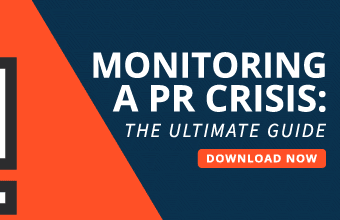A workplace accident can be devastating for a business’s reputation, on top of hurting whoever’s involved. If not handled responsibly, your injured worker could face much more damage and harm, your business will have to shell out more money, and on top of that, you could lose business or other employees.
So what’s the best way to properly handle a workplace accident?
The ultimate goals
Your ultimate goals as an employer should be:
- Safety and recovery. Your highest priority should be the safety of your workers and the recovery of the person who was injured. Reducing further accidents and making up for the initial injury is the ethical thing to do—and it has many practical benefits as well.
- Legal compliance. Make sure you’re compliant with all local laws and regulations related to workplace injuries. Since the injured employee may also talk to a lawyer about filing a personal injury case, it’s also a good idea to make sure your paperwork is in order.
- Financial impact minimization. You may also have a vested interest in reducing the potential financial impact of this incident. You don’t want to spend thousands of dollars on safety measures that are wholly unnecessary, nor do you want to shell out millions for a personal injury case where fault is ambiguous.
- Reputation preservation. Workplace accident management is also important for preserving your reputation. If your brand develops a reputation for neglecting its workers or having unsafe working conditions, you could lose customers and employees alike.
The immediate aftermath
In the immediate aftermath of an accident, these are your highest priorities:
- Get everyone safe. First, get everyone to safety as quickly as possible. The most injured workers should be your highest priorities, if there are multiple people involved. Move injured persons to an area where they won’t be disturbed, and if necessary, restore environmental conditions that minimize the risk of injury, such as turning off machinery or closing off an area.
- Call emergency services. Contact emergency services right away unless it’s clear that no one is seriously injured. If someone has faced a serious injury, or if you’re not sure whether their injuries are severe, get an ambulance on the way. Immediate medical treatment can often make a huge difference in a person’s chances of living and recovering.
- Gather evidence. Once you’ve contacted emergency services, begin to gather evidence of the incident. Take photos and videos if you can, review and preserve any surveillance footage you might have, and ask other employees if they saw the incident unfold. The more details you have, the better.
- Properly document the accident. It’s also important that you or the authority on this matter properly document the incident. Your workplace should have a form for workplace accidents that’s straightforward and easy to fill out. Try to get a signature from involved parties acknowledging the validity of this report.
Days and weeks that follow
In the days and weeks that follow the initial incident, these are some of the most important steps to take.
- Issue a statement. Depending on the nature of the accident, it may be in your business’s best interest to publicly issue a statement. Keep your language as concise as possible and provide any details you can legally disclose that are relevant for understanding the incident. Often, the more you try to hide what happened, the more attention you’re going to bring on yourself; this is known as the Streisand effect.
- Improve safety standards. This is an opportunity for you to review the safety standards of your workplace and analyze the chain of events that led to this injury. Consider adding new safety precautions or new procedures that prevent the accident from repeating in the future.
- Support the injured worker. If possible, try to show support for the injured worker. That could mean sending flowers to the hospital, putting a card together with signatures from the team, or just calling to see how they’re doing. It’s good for the injured worker, and it shows your team how much you’re willing to support your employees.
- Handle legal action cautiously. If you may face a personal injury lawsuit, proceed with caution. Document every communication thoroughly and work with your own legal team to prepare a defense.
It’s also important to work proactively. If your business hasn’t been the site of a workplace injury in the past several months, consider yourself lucky—but that doesn’t mean an injury will never occur.
Make sure all your managers and supervisors are properly trained on how to handle a workplace injury; if you work in a high-risk area, make sure you have people on staff who also know basic first aid. And, of course, do whatever you can to maximize worker safety and prevent such incidents from occurring wherever possible.








